Tokonoma Album 001: Calligraphic Work, Shikibana, Shikunshi, etc
Contents
Tokonoma & Kakejiku Scroll : Calligraphic Work in the Kobe Kiccho Restaurant
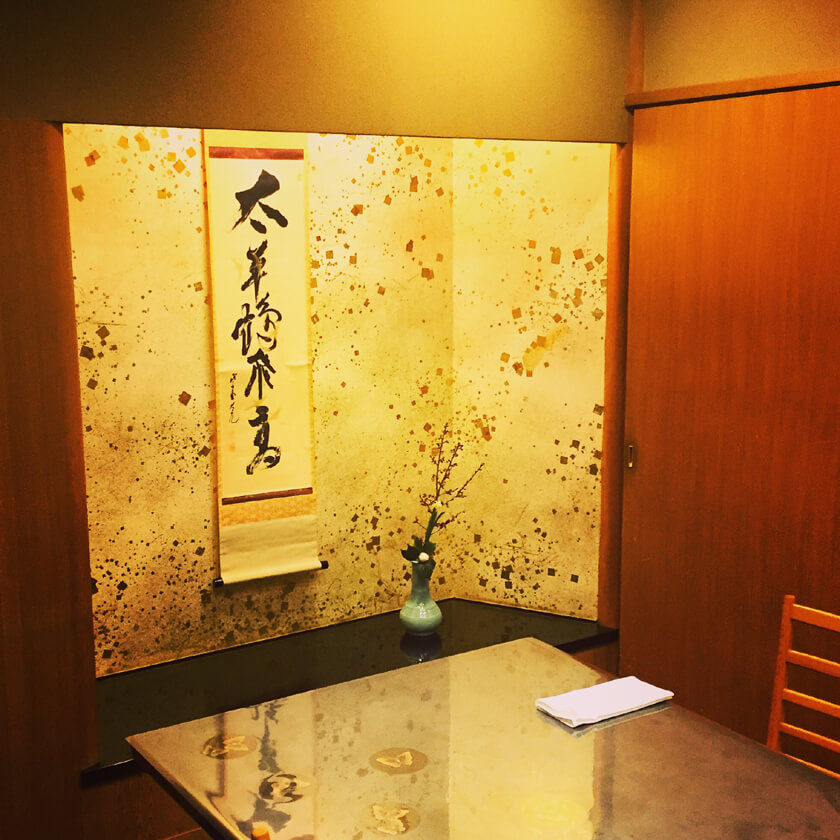
The Kobe Kiccho is one of the representative high class restaurants in Kobe. The above photo is the Kiccho’s tokonoma alcove. The wall of tokonoma made of paper sprinkled with gold leaves is very beautiful.
Tokonoma & Kakejiku Scroll: Calligraphic Work in a Tea Ceremony Room
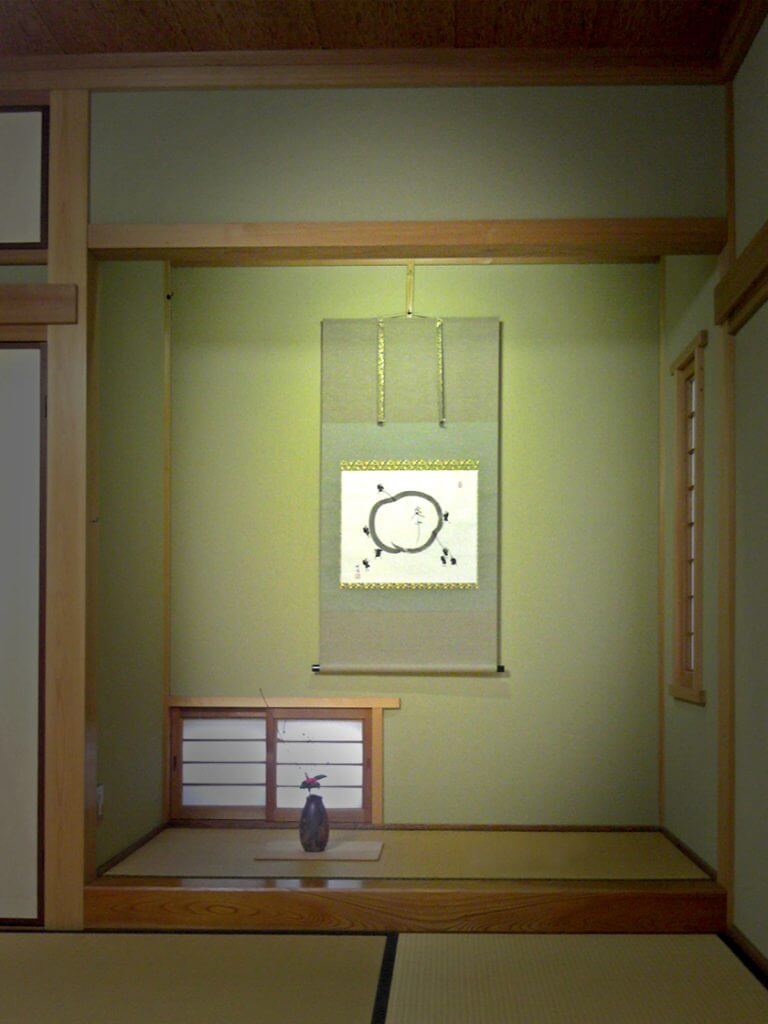
2 shoji windows are attached to a tokonoma in chashitsu (tea ceremony room). Shoji is a translucent screen made of a wooden frame covered with rice paper. Ikebana, the Japanese art of flower arrangement is amazing.
Tokonoma & Kakejiku Scroll: Shikibana Flowers
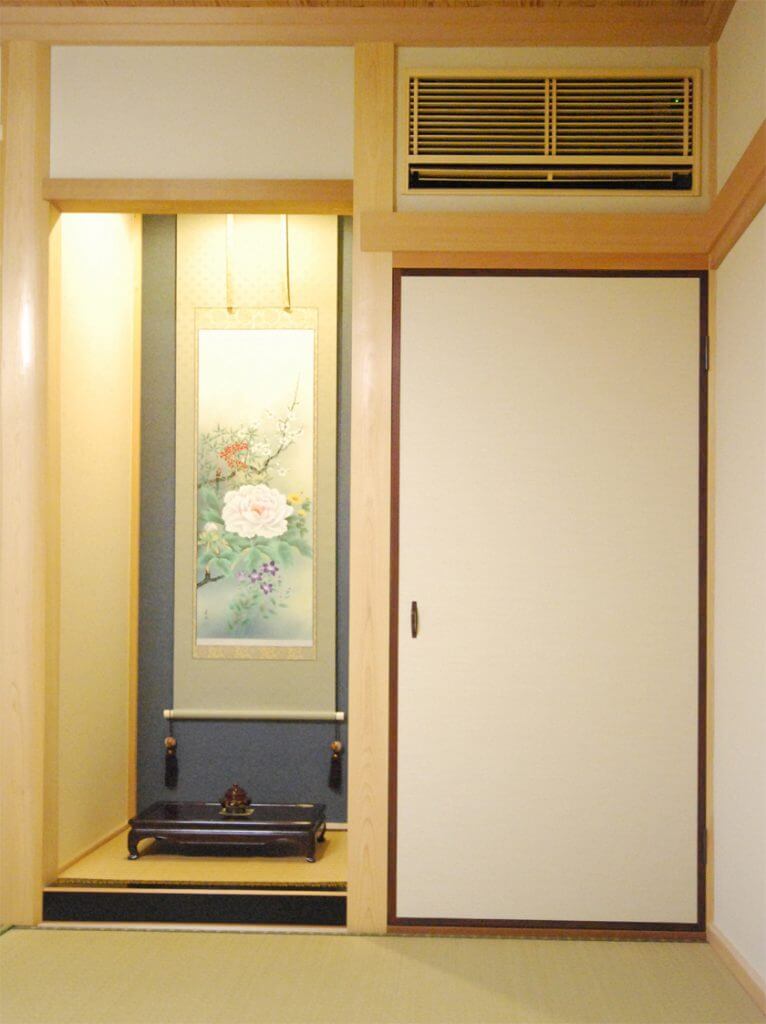
“Shikibana” means four flowers, each representing one of the four seasons. Shikibana is one of the subjects of the usual kakejiku. Although there is no special rule, a peony, which is considered the king of flowers in China, is usually positioned in the middle of the screen, with the other flowers encircling it.
Tokonoma & Kakejiku Scroll: Shikunshi Plants
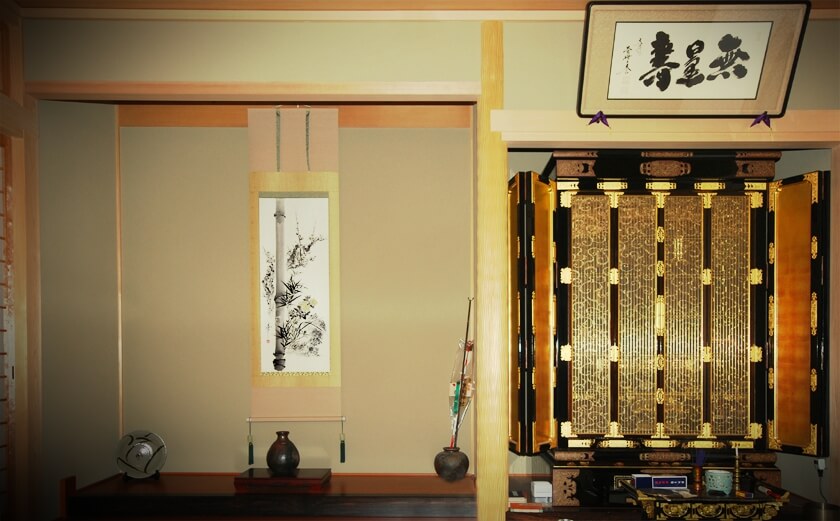
In Chinese art, the Four Gentlemen, also called the Four Noble Ones, are four plants: the plum blossom, the orchid, the bamboo, and the chrysanthemum. The term compares the four plants to Confucianist junzi, or “gentlemen”. They are most typically depicted in traditional ink and wash painting and they belong to the category of bird-and-flower painting in Chinese art. The Four Gentlemen have been used in Chinese painting since the time of the Chinese Song dynasty (960–1279) because of their refined beauty, and were later adopted elsewhere in East Asia by artists in Korea, Japan, and Vietnam.
As they represent the four different seasons (the plum blossom for winter, the orchid for spring, the bamboo for summer, and the chrysanthemum for autumn), the four are used to depict the unfolding of the seasons through the year.
-Wikipidia-
Tokonoma & Kakejiku Scroll: Shikoku Pilgrimage
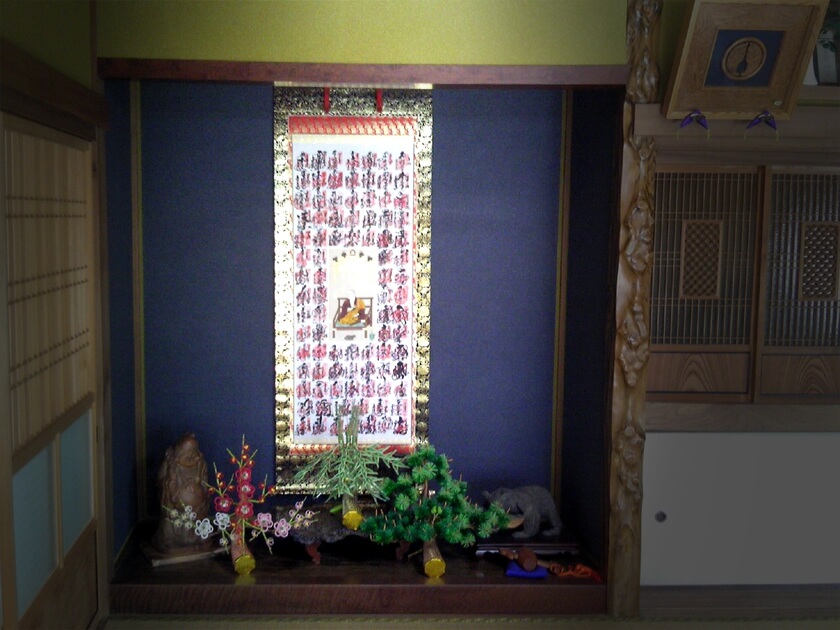
“Shikoku-Henro,” “Shikoku-Junrei” or “Shikoku-Hachijuuhachi-kasho” is a multi-site pilgrimage of 88 temples associated with the Buddhist monk Kūkai (Koubou-Daishi), on the island of Shikoku, Japan. Large numbers of pilgrims still undertake the journey for a variety of ascetic, pious and tourism-related purposes. To complete the pilgrimage, it is not necessary to visit the temples in order. The pilgrimage is traditionally completed on foot, but modern pilgrims use cars, taxis, buses, bicycles or motorcycles. The walking course is approximately 1,200 km long. Generally, it takes about 40 days by walking, and about 10 days by a sightseeing bus or car.
The pilgrims are often recognizable by their white clothing, sedge hats, and walking sticks.
Many pilgrims begin and complete the journey by visiting Mt. Kouya, in Wakayama Prefecture, which was settled by Kūkai and remains the headquarters of the “Shingon-shū” sect of Buddhism. The 21 km walking trail up to Mt. Kouya still exists, but most pilgrims use trains or cars.
Pilgrims record their progress with a prayer book called Noukyouchou, which the staff of each temple marks with red stamps, Japanese calligraphy indicating the temple number, the temple name and the specific name of the Principal Image of Buddha and the Sanskrit characters to express it.
Some pilgrims receive the stamps and calligraphy on plain silk which will be mounted on a kakejiku by a scroll mounter (hyougushi) like us. The kakejiku, which is called “shikoku-hachijuuhachikasho-shūinjiku,” is very popular in Japan. It is sometimes used in Buddhist memorial services.

